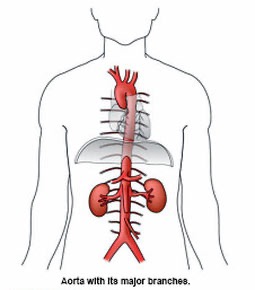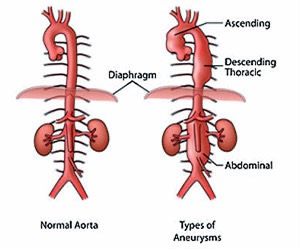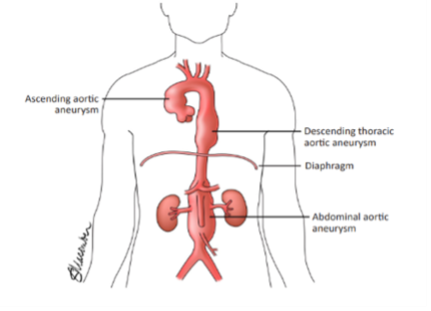Overview
Aortic Aneurysm
The aorta is the largest artery in the body. It goes from the heart down through the chest (thoracic aorta) and into the abdomen (abdominal aorta). It carries oxygenated blood away from the heart to the rest of the body.

An aneurysm occurs when the wall of the aorta becomes weak. The pressure of the blood flowing through the aneurysm creates a bulge at the weak spot. The bulge usually starts small. The aneurysm may grow over time as the pressure continues.
Abdominal Aortic Aneurysm
An abdominal aortic aneurysm (AAA) occurs in the aorta below the level of the diaphragm.
- AAA is the most common aortic condition.
- AAA can also be associated with aneurysms in the iliac arteries, which are arteries by the base of the aorta, below the abdominal aorta. Iliac arteries provide blood to the pelvis, pelvic-area organs and legs.
A ruptured AAA occurs when the aneurysm becomes too large and ruptures (bursts). It is the nation’s 10th leading cause of death in adults.
Thoracic Aortic Aneurysm
A thoracic aortic aneurysm occurs in the aorta above the level of the diaphragm.
If an aneurysm becomes large and is not repaired, it can rupture (burst). A ruptured thoracic aortic aneurysm is a life-threatening emergency that requires immediate medical attention.


